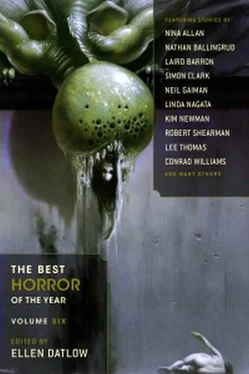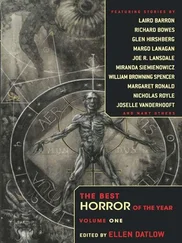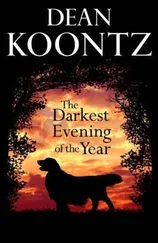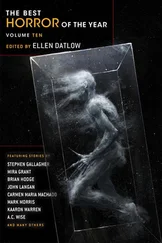She didn’t forget about it; she’d had dreams stay with her before, mostly the unpleasant kind, and she hated those days, haunted by her own un conscious. She knew instinctively this was different. This was something from outside her. She could not have produced objective proof to show to someone that this was the case. She knew all about the games the mind could play to make oneself believe in its wild flights of fancy. And she knew in the depths of her soul (in which she did not believe, any more than she believed in ghosts or haunting) that the kind of words she’d googled and the daylight world with its prosaic explanations and even the most unwholesome depths of her own brain had nothing to do with the things that had stolen into her room that night and despised her with such vehemence.
She had always thought of hate as a human emotion, a uniquely human frailty, a condition from which we might have to evolve to survive. Never before had she considered the possibility that hate was the most essential thing there was; that the universe was an engine driven by hate, animals savaging one another, atoms smashing together, planets and worlds dying in explosions of rock and fire. And to have so much of that directed at her. At her . She sat stunned in her office at Park Hall, her eyes fixed on the fake wood grain of her desk, someone knocking and knocking at her door and she knew it was a student because he’d scheduled an appointment with her and yet she could not answer it, she could not move, she could only sit paralyzed by her newfound knowledge, and at last the knocking ceased and went away and she wished she could, too.

The existence of Christopher Crane has never been in question. The roots of the Crane family run deep in the soil of Clarke County, and though Crane himself was away for many years, he was fondly remembered as one of the founding members of the indie/alt-country group the Gaslight Hooligans, who went on to moderate mainstream success following his departure.
At least, this is how I remember Chris Crane, as do a number of people I know, but others insist on a different narrative. That Chris Crane never left town, that the Gaslight Hooligans broke up more than a decade ago after playing a few house parties and one or two dates in local clubs, to indifferent reception. Same as hundreds of other bands that spring up here each year and are soon forgotten.
Sources online and off are mixed in their reportage, but one thing is certain, that at least two and possibly more conflicting versions of the life of Chris Crane are out there. This introduces a disconcerting possibility: that we are all, now, existing in a dubiously real and unstable present, one in which Vivian Crane was and was not, and the house on Cobb Street at the heart of it all.
— Perry “Pear Tree” Parry, Google cache of a blog post made at
Under the Pear Tree , July 9, 2010 (not available on the blog itself)
It is six months since she lost Chris. Her best friend, Felicity, has come from Seattle to visit her, has been staying in the house with her and urging her to get out. She doesn’t need to do anything big, Felicity says, but she needs to do something besides go between home and campus. (This awful home, Felicity doesn’t say, this terrible place that took Chris and is taking you. But Felicity knows.)
But she’s hiding something from Felicity, and she’s increasingly sure Chris was hiding the same thing from her in his last days. It’s something that happened just before Felicity arrived, and afterward she tried to make Felicity postpone her visit (forever), but Felicity was having none of that. Felicity thinks Chris’s suicide has opened the gulf between them, best friends from the age of five gone suddenly quiet and awkward in one another’s presence. Felicity has no idea that the gulf is so much greater than that.
Vivian does not know whether to be overjoyed or horrified that she now bears physical proof that she isn’t mad. A week before Felicity’s visit, she is sleeping in the bed she and Chris shared. She has woken paralyzed once again, and something is screaming in the walls. This is not so bad; at least it’s in the walls, and not in the room with her. She lies there and thinks about “The Yellow Wallpaper,” a story she has taught to countless freshmen, and the poor insane narrator following the twisty patterns and the women creeping beneath them. Thinking of these creeping women serves, oddly, to calm her as the screamer eventually winds down, perhaps because she is able to make them into academic abstractions and symbols while the suffering of the screaming woman in the walls is so very real.
But it is not long before she senses a presence beside her, in the very bed next to her, and this is so terrible that she starts to shake all over in spite of the paralysis. If it were Chris, she would be sobbing with joy, but it is not Chris. It is something else. She cannot tell if it is male or female, or neither, or both. The something else takes her hand, weaves its awful fingers through hers in that intimate fashion, and she realizes that before now she has never known what cold truly means. From the palm of her hand, the cold blooms into her wrist, up her arm, and then throughout her body, and she thinks this is my death and knows they will find her some hours or days later and pronounce it “natural causes” without knowing there is nothing in the world so unnatural as the thing that has hold of her in the bed at that moment.
And then it’s gone; she’s heaving and sputtering and gasping and racing for the bathroom where she steps into a scalding hot shower, pajamas and all (for she is afraid to be naked), and she is scrubbing herself, shivering still, and her now ungripped hand is cold, so cold, and that’s when she first uncurls her fingers from her palm and sees it there, a scorched circular shape, and then she looks closer and notices the head of the snake in the fleshy part at the base of her thumb and realizes what she is seeing: an Ouroboros, the serpent devouring its own tail. And she knows in that moment that she has been claimed by something terrible.

The house on Cobb Street possessed several unique properties in regards to its purported haunting. There appeared to be no originating event, no horrific murders, no ghastly past prior to its possession of the Crane couple (and after reviewing the evidence, I believe this is indeed the best description of the effect the house had on Christopher and Vivian Crane). Locals remember no unsavory legends attached to the house. For roughly three decades prior to its purchase by the Cranes, it was simply another decaying student residence. The house was previously owned by two sisters, who spent their entire lives there. Its Wisconsin-based owner, a great-niece who died shortly after the Cranes purchased it, left its management to the local Banks Realty, who say no unusual problems were ever encountered beyond the usual wear and tear.
Yet few of its residents from the years immediately prior to the Crane purchase could be tracked down. Of those who reported any paranormal experiences at all, each attributed it to the ingestion of psilocybin mushrooms or LSD. All three were located as in-patients at separate mental health facilities. None had been roommates with or were aware of the others, nor had any of them discussed their experiences with anyone else, but all date the onset of their initial mental illness as subsequent to their residence at the house on Cobb Street. Each claimed to have once borne a circular tattoo on the palm of their left hand, visible now only in the faintest outline of one of the three: that of the snake Ouroboros, the symbol for infinity.
Читать дальше













